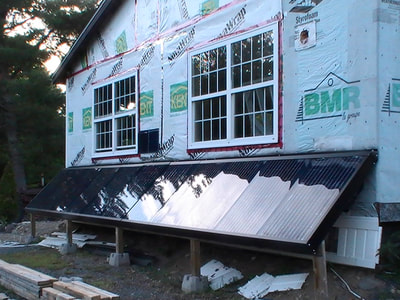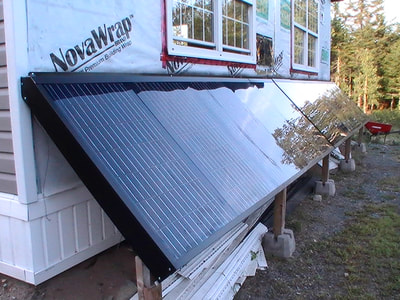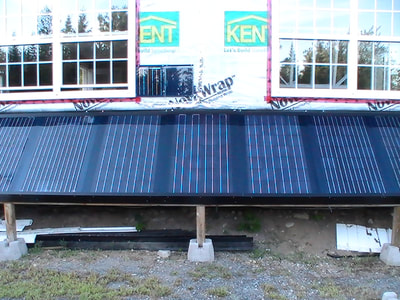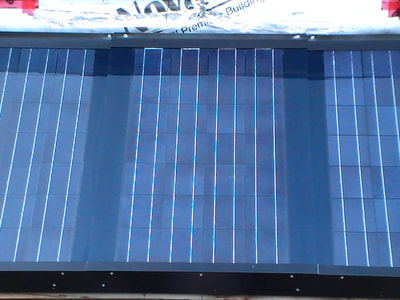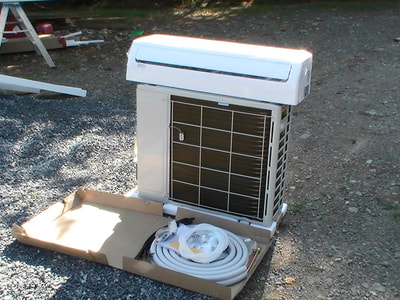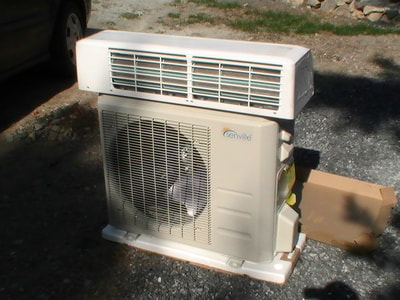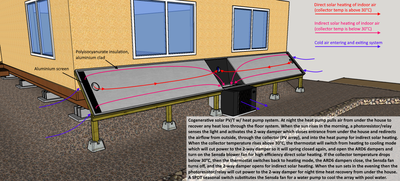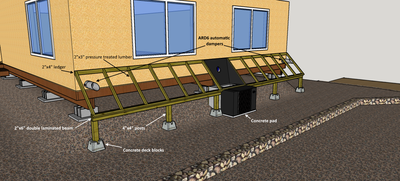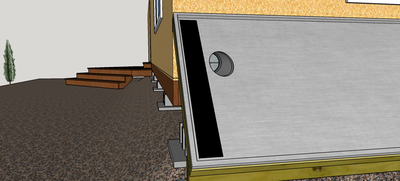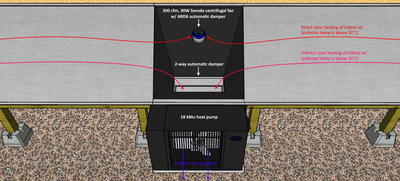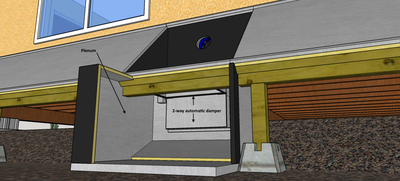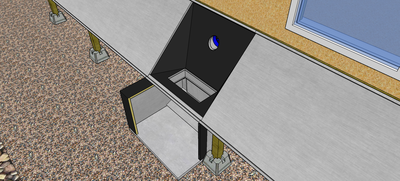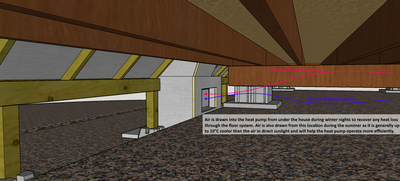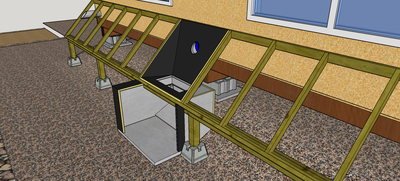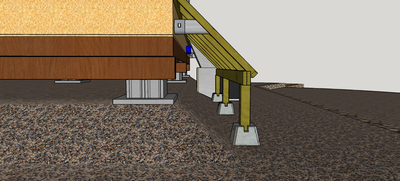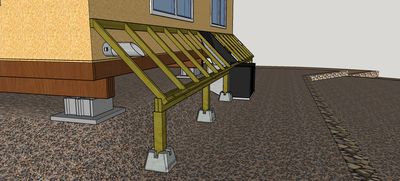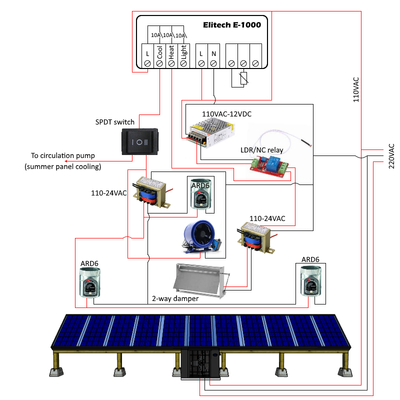Solar Heat Pump System
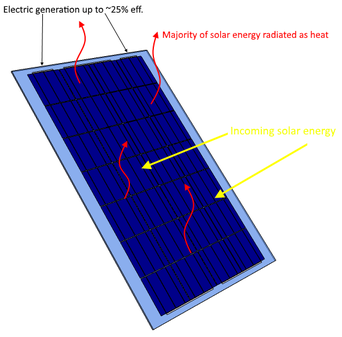
Most of the solar energy that a PV panel absorbs is lost as heat. Even the best cells will only convert up to ~25% of that energy into electricity, and the hotter they get, the less efficient they are. So that amounts to quite a bit of wasted potential with conventional PV installations.
A solar PV/T (photovoltaics/thermal) system makes use of that wasted heat by passing a fluid (in most cases either air or a water/glycol solution in piping) directly behind the PV panels at a certain flow rate to optimise absorption of the otherwise wasted heat the panels produce, and puts that heat to work (space heating, DHW, etc).
The PV/T system for this project consists of eleven ~120W PV panels on a wood rack with polyisocyanurate insulation and aluminium cladding. Electrical production is managed by a 40A SRNE MPPT charge controller, and stored in eight Exide GC-145 lead acid batteries. With a 220VAC power inverter, these will power the heat pump (mentioned later). A backpass closed loop airflow is created behind the panels by a high efficiency centrifugal fan (30W Sensda, 300 cfm, 2" H2O static pressure) which moves air from in the house to absorb the heat from the panels, then directs it back into the house again.
Unfortunately, with the panels being exposed directly to cold winter air, there will be radiant losses no matter what. Combined with occasional cloudy weather and sunsets means that the array won't be producing full power all the time, or any power at all at times. This is where the cold climate air source heat pump comes into play.
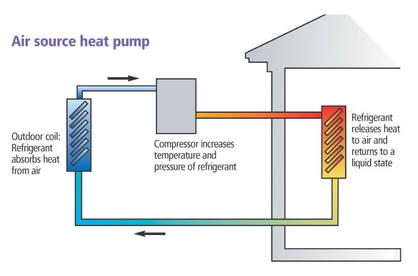
An air source heat pump consists of an evaporator coil, a condenser, two fans, a compressor, and plumbing lines containing a refrigerant. In simple terms, during the winter the large fan in the outdoor unit pulls cool outdoor air through the evaporator coil which causes the refrigerant inside to absorb what's called 'latent heat' from that air, and then begins to boil and evaporate (hence the term 'evaporator'). Although the refrigerant is boiling, it's still not carrying enough useful heat (refrigerant boiling points are typically very low). The compressor then pressurizes the refrigerant to raise it's temperature to a level that would be suitable for indoor space heating. Once the refrigerant is up to temperature, it passes through the condenser coil/heat exchanger where indoor air also passes through the condenser's fins to absorb the heat from the refrigerant and deliver it where it's needed, while at the same time the refrigerant cools, condenses back to a liquid and returns to the evaporator to continue the cycle.
A heat pump is essentially an air conditioner working in reverse. Instead of pumping heat from indoors to outdoors, it's pumping heat in reverse. They both use the same principals and similar technology. As you may already know, the hotter it is during the summer, the harder an air conditioner has to work to remove heat and cool a living or work space. This is because hot air will absorb less heat from the condenser than cooler air because it's already 'charged' with heat energy. Similarly, the colder it is outside then the harder a heat pump has to work to extract heat from the outside air.
A heat pump is essentially an air conditioner working in reverse. Instead of pumping heat from indoors to outdoors, it's pumping heat in reverse. They both use the same principals and similar technology. As you may already know, the hotter it is during the summer, the harder an air conditioner has to work to remove heat and cool a living or work space. This is because hot air will absorb less heat from the condenser than cooler air because it's already 'charged' with heat energy. Similarly, the colder it is outside then the harder a heat pump has to work to extract heat from the outside air.
So instead of the solar thermal side of the system shutting down completely when the collector temperature drops, it's still generating and contributing thermal energy to the house while decreasing the heat pump compressor's energy usage and increasing its COP by substituting a cold air source with a relatively warmer one. This makes both systems much more efficient compared to if each system were operating independent of each other. Subsequently, this decreases the payback period for both the PV/T and heat pump systems, making both technologies an even wiser investment for Canadians than they already are.
|
|
|


